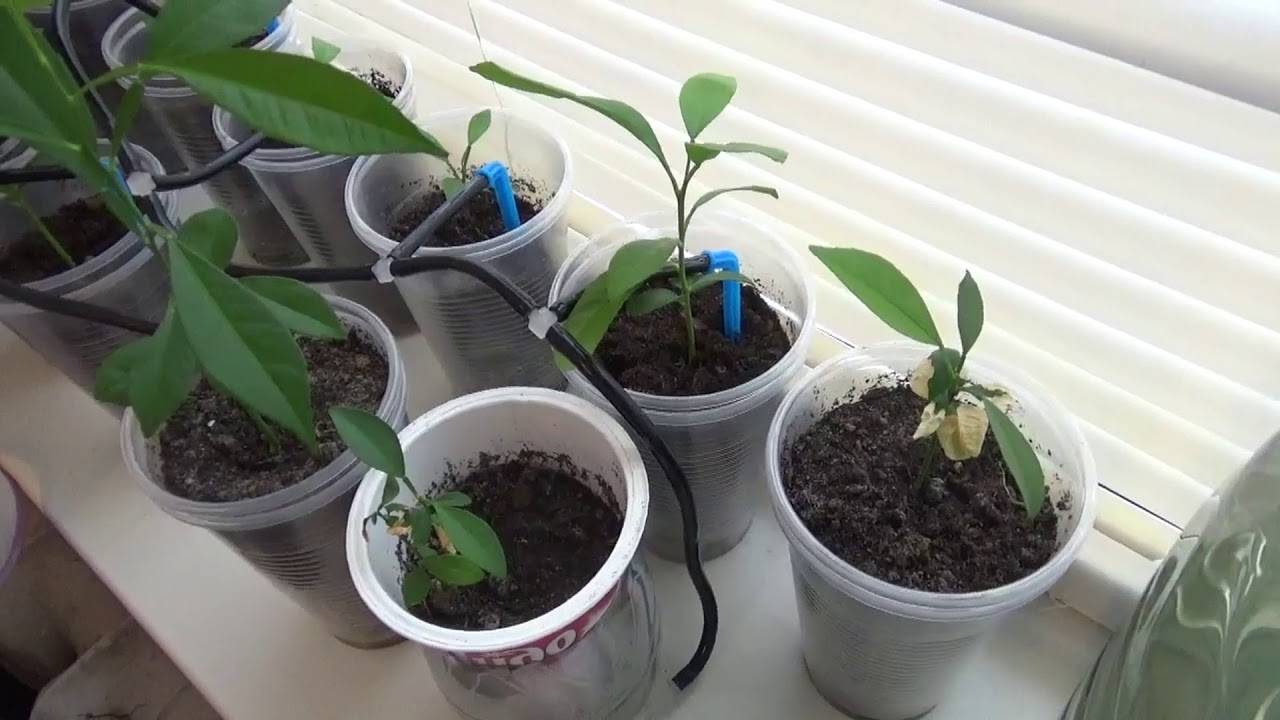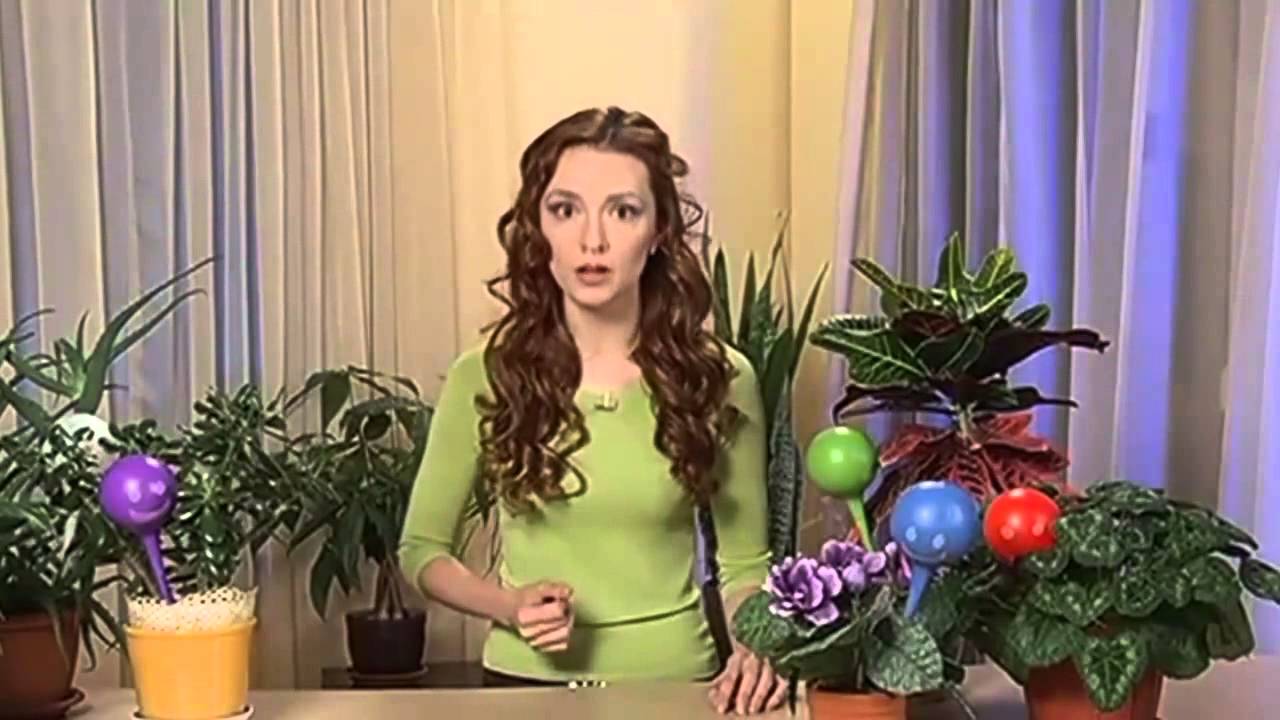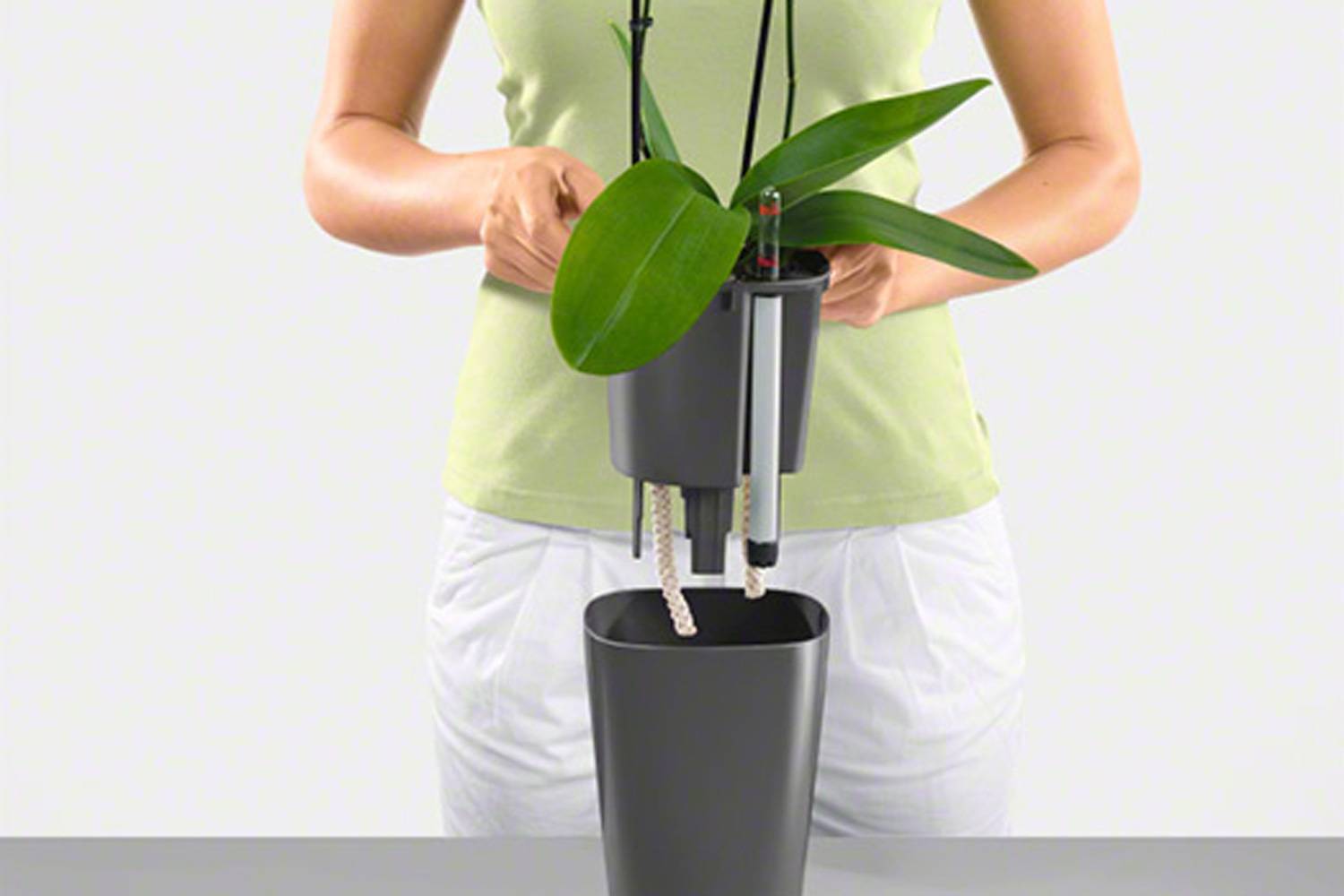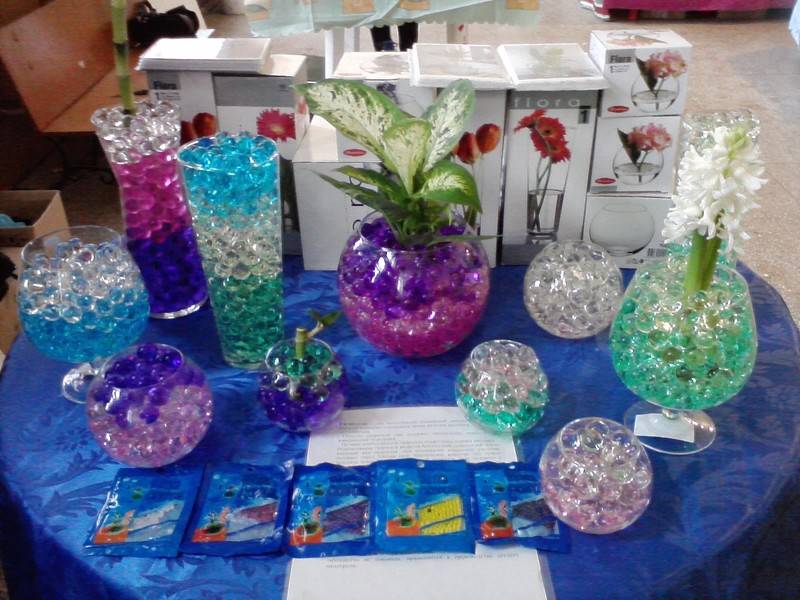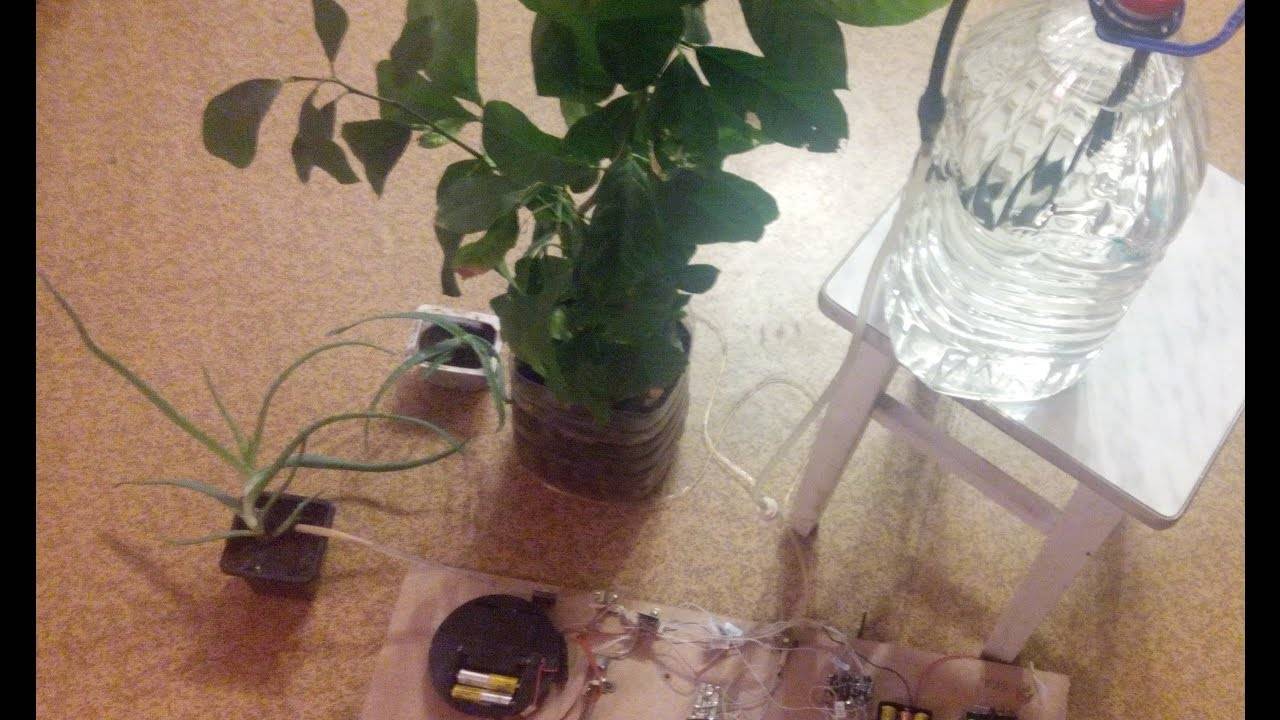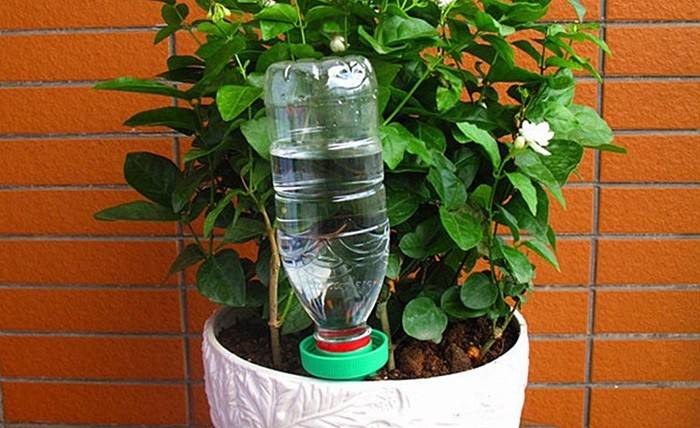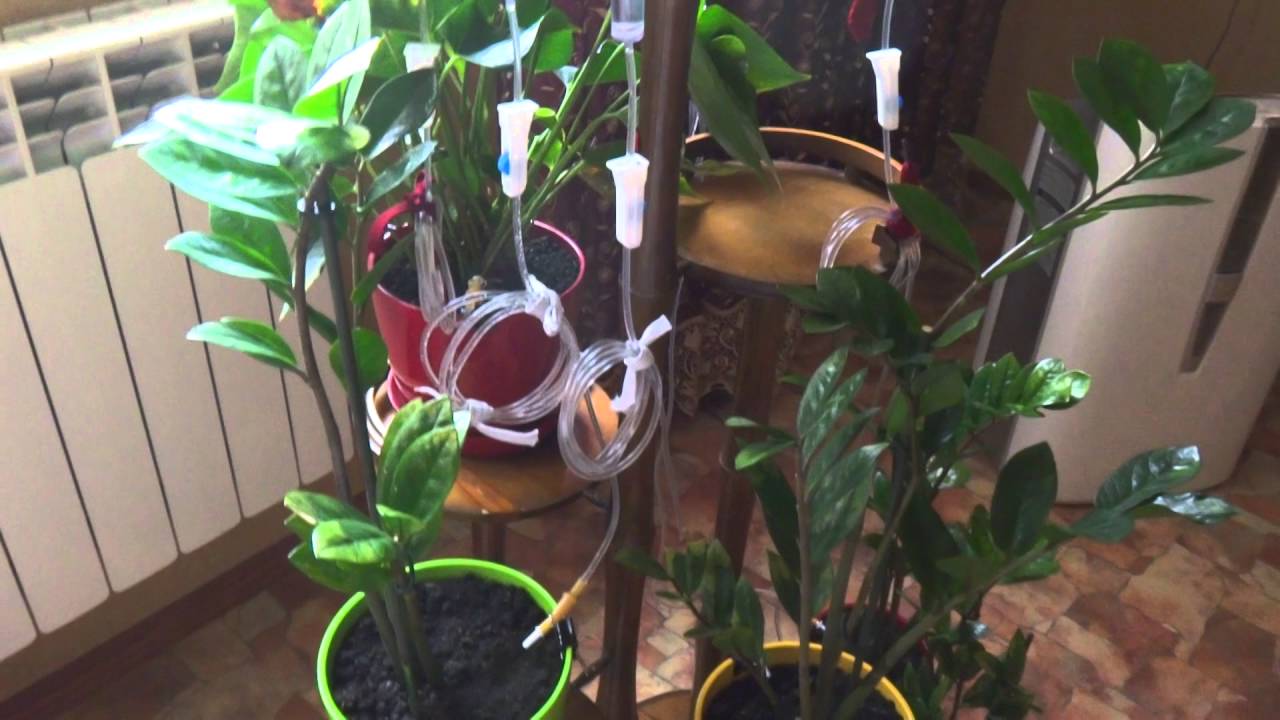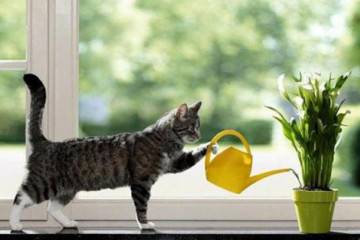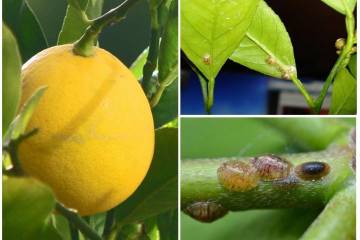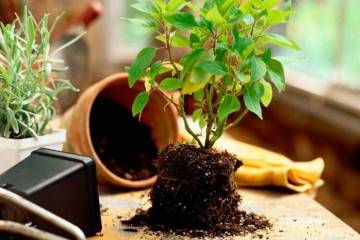Do-it-yourself autowatering for indoor plants
Content:
Often a problem arises when you need to go on vacation, and there is no one to leave indoor flowers to. In this case, it is worth considering a special system for automatically supplying water to flowerpots. Such watering can be organized independently using the most common means. It is worth carefully studying all the characteristics of each device, since the functionality of the device depends on this.
Automatic watering for indoor plants
Auto-irrigation for indoor plants can be done independently or you can purchase ready-made devices with a diverse irrigation mechanism. There are several simple options that can be purchased from a flower shop:
- flasks or balls-enemas;
- pots equipped with an automatic watering system;
- capillary mats;
- hydrogel or clay in granules;
- ceramic cones;
- flowerpots with a wick.
Some of the options presented can be organized independently, using available materials and tools.
Flasks for watering indoor plants and balls-enemas
The simplest device for autowatering is a flask. You need to pour water into a glass container that looks like an ordinary chemical flask. Turn the container over, closing the "neck" with your finger, stick it into the ground.
An alternative are enema balls, which are also made of glass and outwardly resemble a medical device for cleansing the intestines. The installation principle is the same as for the flask.
Such a device has its advantages:
- the cost of the device is low;
- thanks to the unique design it looks original in a pot;
- installation does not require special skills.
There are also negative aspects of using:
- unevenly moisturizes the soil;
- the outlet tube may become clogged;
- the water supply is short-lived.
Flower pots with auto-irrigation
Automatic watering of domestic plants can be ensured from the very beginning, that is, from planting. In a flower shop, you can buy a special pot, which is equipped with a reservoir under the main container.
Through a tube, water from a hidden container rises and is absorbed by the soil, and the plant is provided with moisture in full. The reservoir can be filled if required through a small opening.
Auto irrigation using capillary mats
The easiest way to irrigate flowers for two weeks can be done using capillary mats. The device is made of synthetic fibers that absorb water well.
A device of this type of irrigation is carried out as follows:
- Choose a tray that matches the size of the rug.
- Fill the container evenly with water, and place the device on top.
- Wait for the fibers to absorb moisture.
- Install flowerpots on the material.
Such a device can only be used for those flowerpots that have a hole at the bottom to remove excess moisture from the container. It is through it that moisture will flow from the mat into the ground.
Granular clay
Granular clay, or hydrogel, is not only a good solution to the problem of constant irrigation of indoor plants, but also an additional decor for window sills. Hydrogel granules are available in a variety of colors. Usually, in addition to this material, a glass pot is also bought.
Operating principle:
- Prepare a clean glass pot.
- Pour small balls of hydrogel into a container.
- Fill with water. The small granules will absorb moisture and increase in size. The granules will acquire the desired color.
- Remove the plant from the ground, keeping a small earthen lump.
- Place the specimen in a hydrogel pot.
Ceramic cones
To create a full-fledged oasis for plants during the absence and presence, it is worth using an automatic irrigation system with ceramic cones. They are connected to the main tank with special flexible tubes. Additionally, there is a sensor that reacts to the degree of soil moisture.
The cones are stuck into the ground, and moisture flows through the tubes from the main tank into the ground. When the soil is sufficiently moistened, a sensor is triggered, which shuts off the water supply. The negative is that over time, the pores of the ceramic cones are completely clogged, and irrigation stops. Therefore, it is not recommended to leave such a device unattended.
Wick system
To organize normal irrigation for a long time without extra cost, it is worth considering a wick system. To make it, you need the following components:
- a plastic pot with a drainage hole at the bottom;
- synthetic thread;
- sawed-off from a plastic bottle.
Step-by-step instructions on how to do everything:
- Cut off 15-20 cm of synthetic thread.
- Thread the thread through the drain hole at the bottom of the pot. Half should be on the inside and the other on the outside.
- Pour soil into the container and transplant the plant into a new container.
- Collect water from a plastic bottle.
- Place a pot of earth over a container of water and dip the wick into the liquid.
When the soil begins to dry out, water will rise up the wick and moisten the earth again. Moisture will flow in small portions at the right time.
How to make a self-watering system for indoor plants with your own hands
Self-watering for indoor plants with your own hands can be much cheaper than a purchased product. In this case, the simplest tools and materials can be used. Multi-component structures can fully irrigate the soil and will definitely be more functional than the purchased copy. In most cases, flower growers of any level do not have difficulties with the implementation of projects, it is important to choose the right one.
DIY gravity irrigation system
The automatic gravity irrigation system can be made independently in a short time and using basic tools and materials.Such a device will work flawlessly and can become a unique alternative to expensive devices of this type.
You need to prepare:
- a dropper without a needle and a tip;
- a hose that is used in a car glass washer;
- ballpoint pen;
- eggplant.
Algorithm for creating a unique system with practically "artificial intelligence":
- Cut the body of the ballpoint pen in half. It is better to choose a transparent option so that you can observe the degree of water passing through the section.
- At the bottom of the eggplant, make a hole for this part. In order not to damage the sheet of material, it is better to use a screwdriver hot on the fire. Then the hole will turn out to be uniform, and the edges will remain smooth.
- Insert the body with the threads inward so that half of the part is outside the eggplant.
- Put a rubber washer on the thread. Cut off the tip a little from the handle and screw it onto the fitting together with the washer.
- The main system consists of a conventional drip tube threaded into a tee. Tubes from the washer are connected to the tee.
- One end of the hose remains open to increase the pressure in the container. Its length is the smallest in comparison with others.
- Fill all seams and joints with sealant. You can use rubber bands and a glue gun.
- Place the eggplant above the level of the pots so that the water can drain evenly. Sometimes it is necessary to use stands or hooks to secure the tubes.
In terms of complexity and type of work, such a device is almost identical to the production version of the autowatering system.
Each flower pot is equipped with a tube from the general design. Water is supplied in small portions without the risk of waterlogging or overdrying the soil.
How to make automatic watering from a plastic bottle
This option is suitable for large flowerpots. To do this type of watering, you need to pick up a plastic bottle of the right volume. Fill the container with water, turn it over and stick it into the ground. Gradually, the water will be absorbed by the ground, which will allow you not to water for a long time.
There is another version of the device for the automatic principle of irrigation using a plastic bottle:
- You need to cut the plastic bottle in half.
- Insert a strip cut from the same bottle into the neck. Fold it in half beforehand.
- Insert the parts of the bottles so that the neck rests against the bottom. At the same time, pour water into the lower part.
The difficulty in this version of the device lies in adjusting the water supply rate. It is also necessary to select a container of the required volume, which will correspond to the parameters of the flowerpot.
Automatic watering for indoor plants from a dropper
To organize drip irrigation of flowers on the windowsill, it is not necessary to buy an expensive automatic irrigation system. You can design something similar to the store version, but much cheaper. So, a great alternative is the dropper design. Such a device is not only effective, but also looks very presentable.
Automatic watering bottle for indoor plants from droppers
The automatic principle of irrigation with the help of droppers is similar to the systems that are sold in specialized flower shops. But the dropper option will be much cheaper, and the functionality will be fully preserved.
For the manufacture of the structure you will need:
- 5 liter eggplant;
- several droppers, the number of which is determined by the number of flowerpots requiring watering;
- scissors, scotch tape (electrical tape) for work.
Next, the system itself is mounted. The work on the construction of the device takes no more than 10-15 minutes:
- Collect the tubes in a bundle so that they are located relative to each other at the same level. Roll up the bundle with duct tape to fix the part.
- Make a hole in the lid of the eggplant, which in diameter will correspond to the size of the bundle of tubes.
- Fill the eggplant up to a certain level with water.
- Pass the tube bundle through the hole in the lid. Deepen them so that the tips are located at a distance of 5-7 cm from the bottom of the container.
- Distribute the free ends of the tubes over the flowerpots, sticking each into the ground.
If you need to go on vacation, then you will have to come up with a unique water supply system for the flowers in order to keep the soil moisture at a certain level. There are many options for arranging such a device, where at least one is suitable for a florist. In some cases, you can make the device yourself, using simple elementary tools and materials, or you can buy a ready-made one. What to choose, everyone decides for himself. One thing is clear that this thing is irreplaceable.

